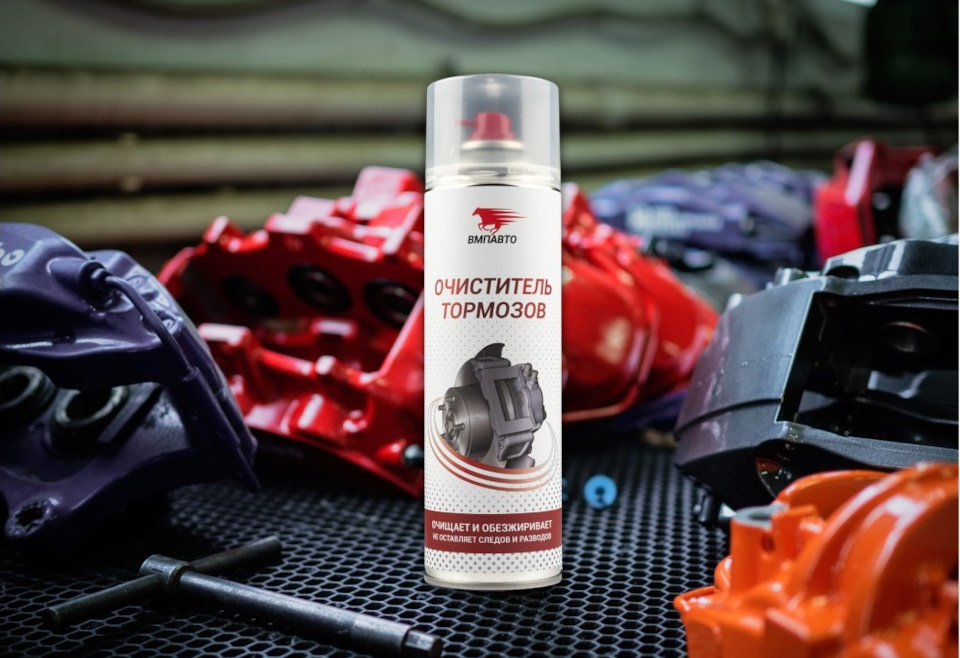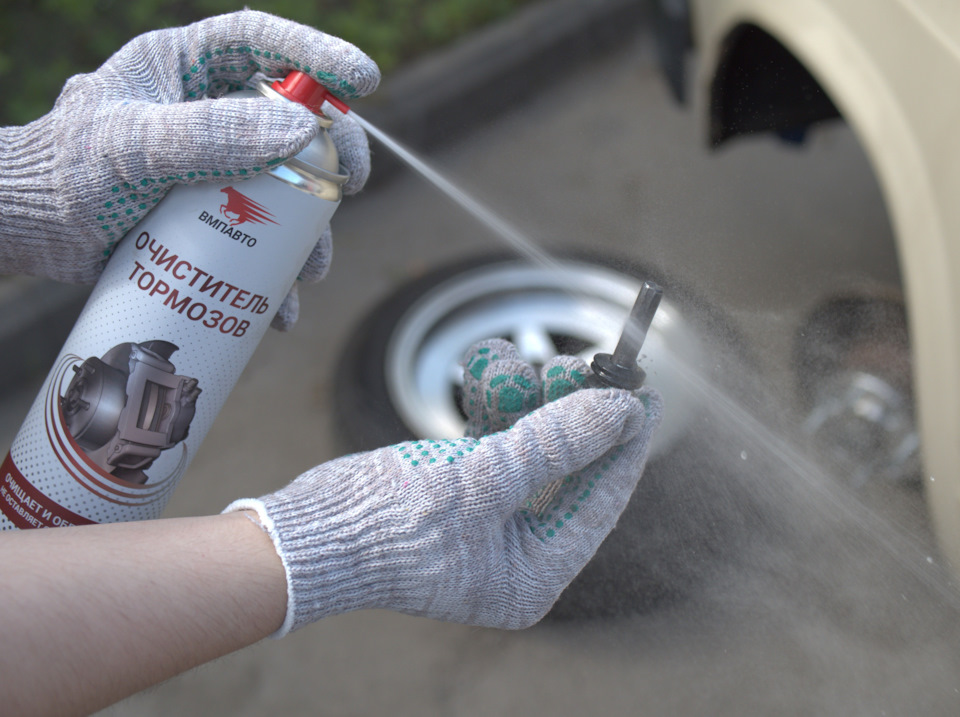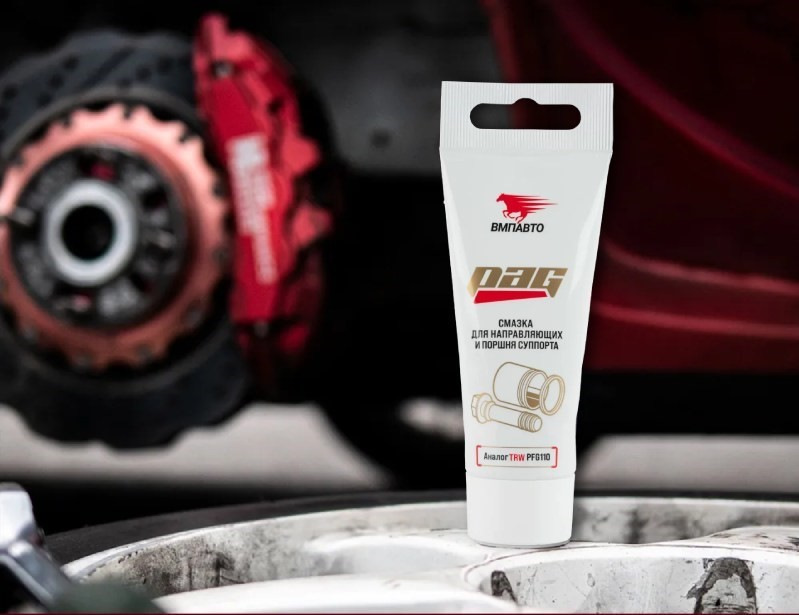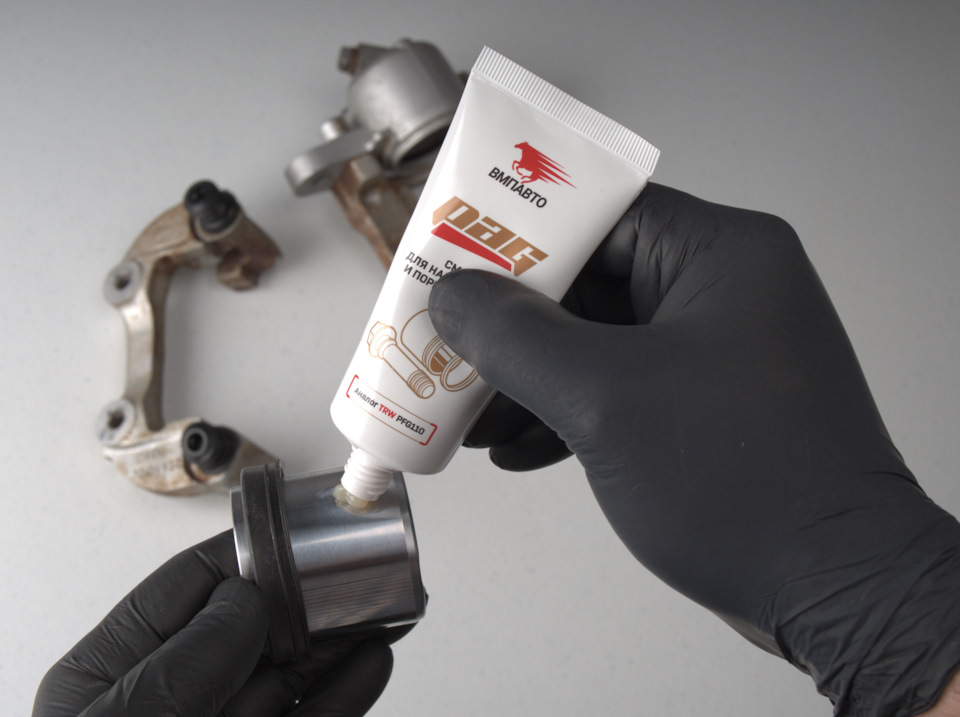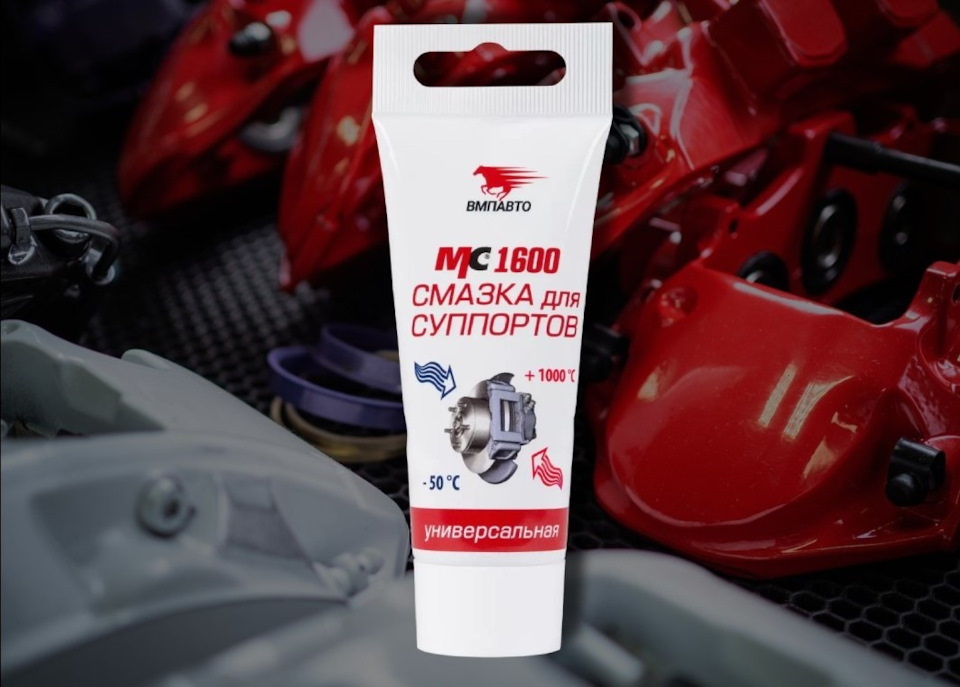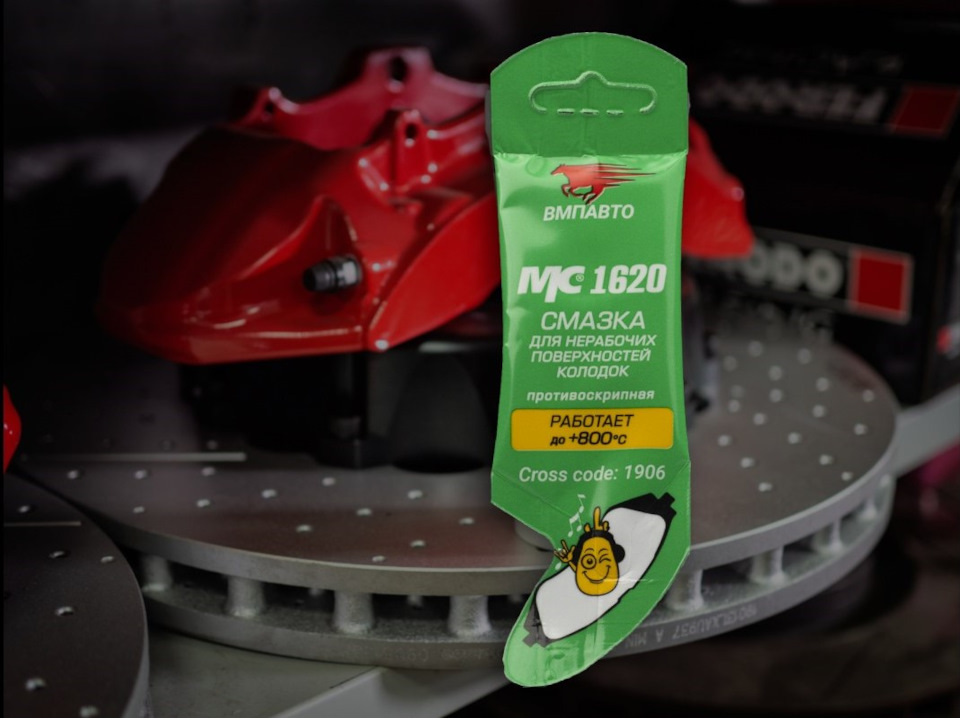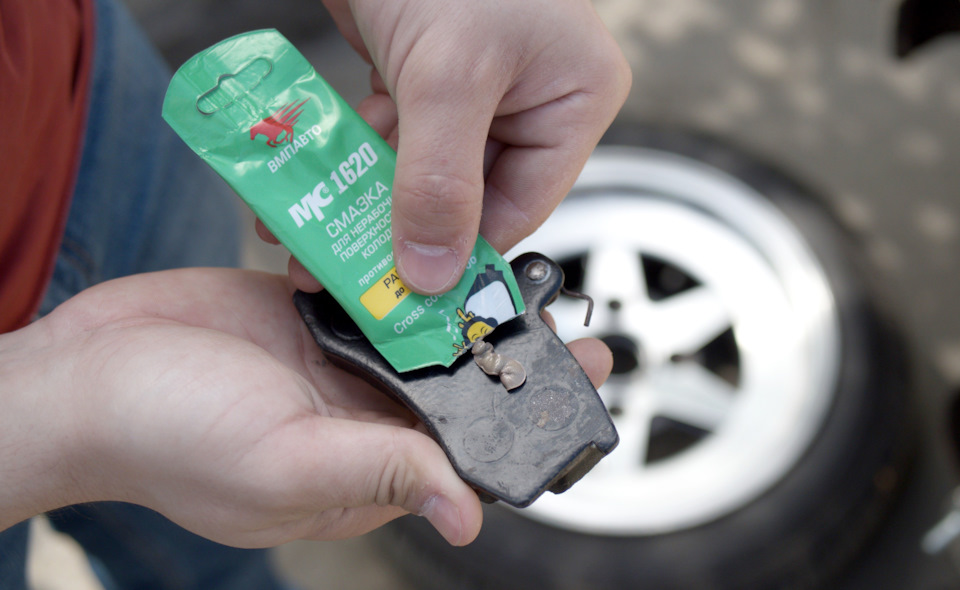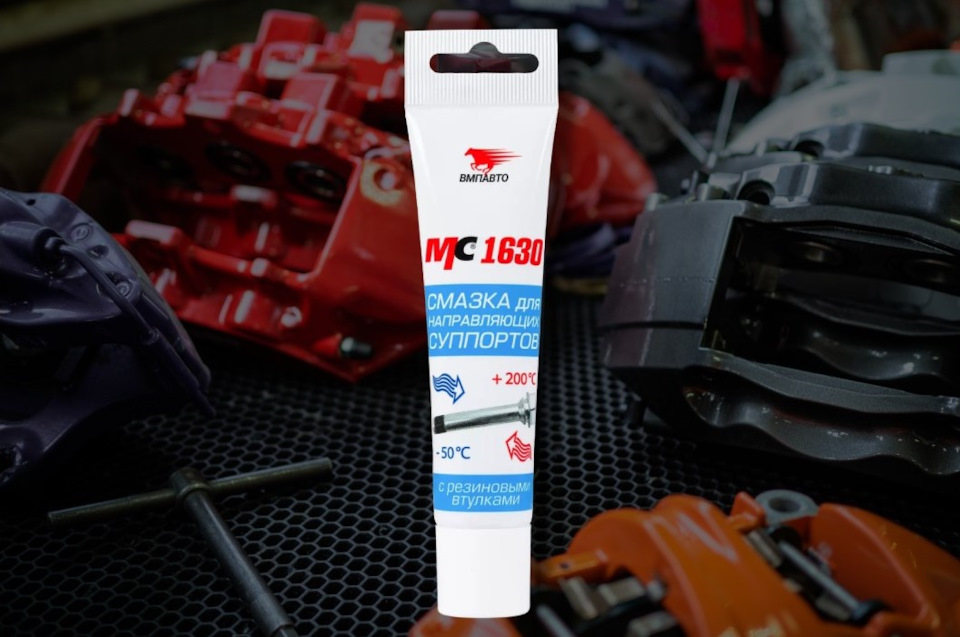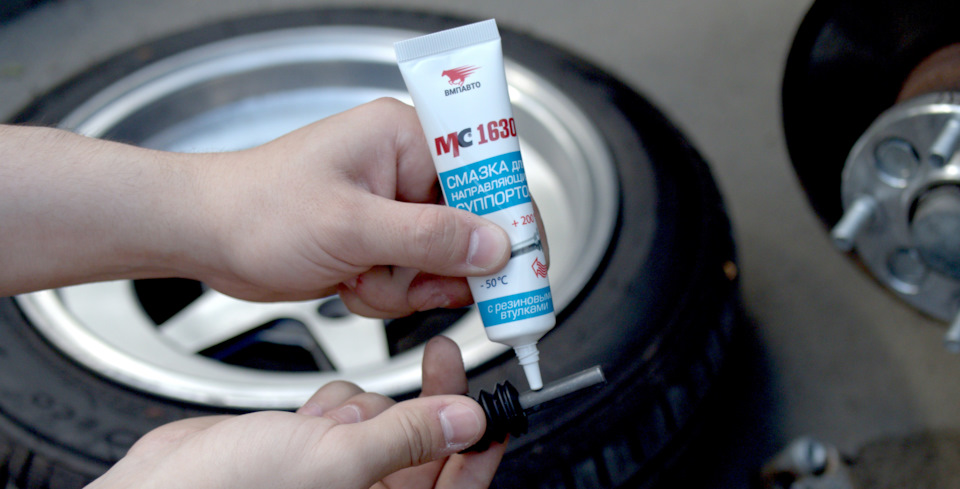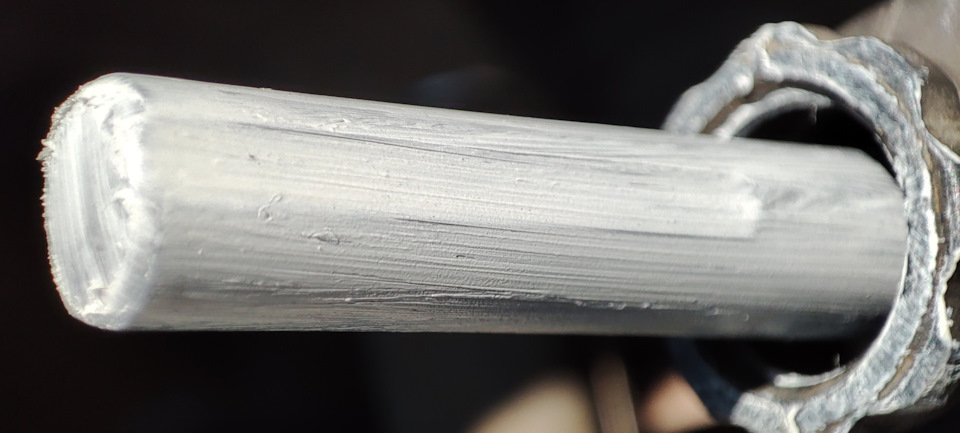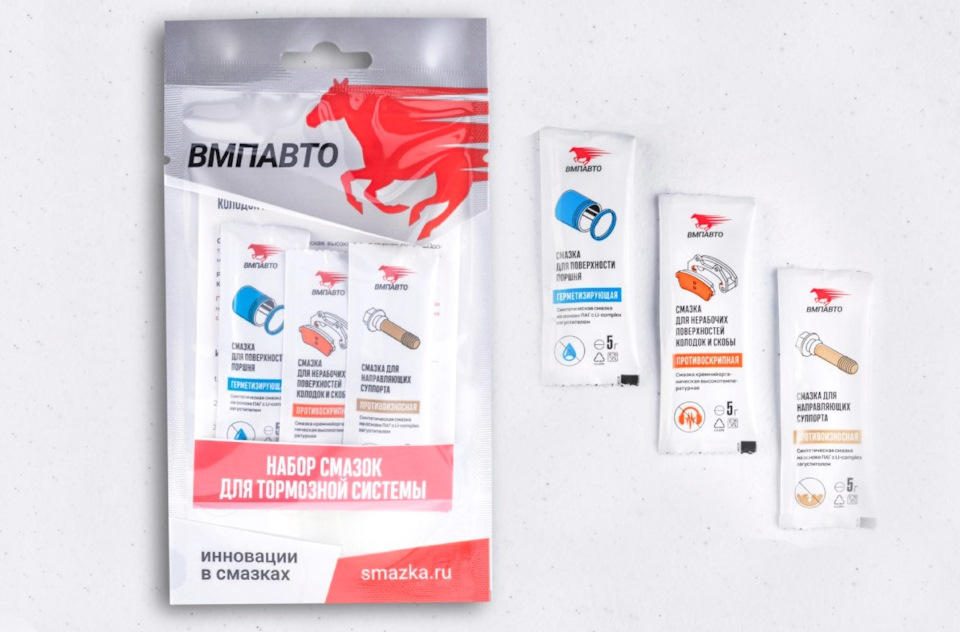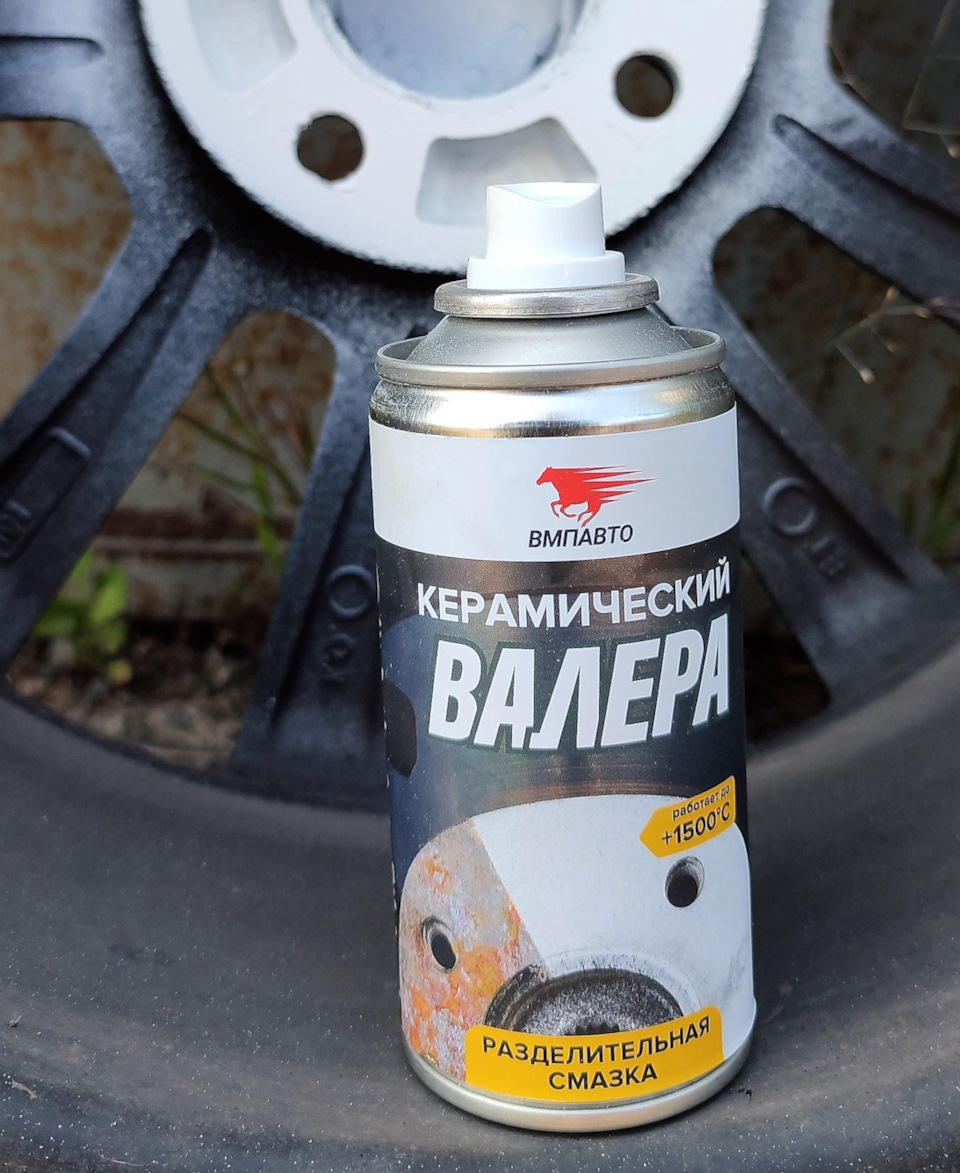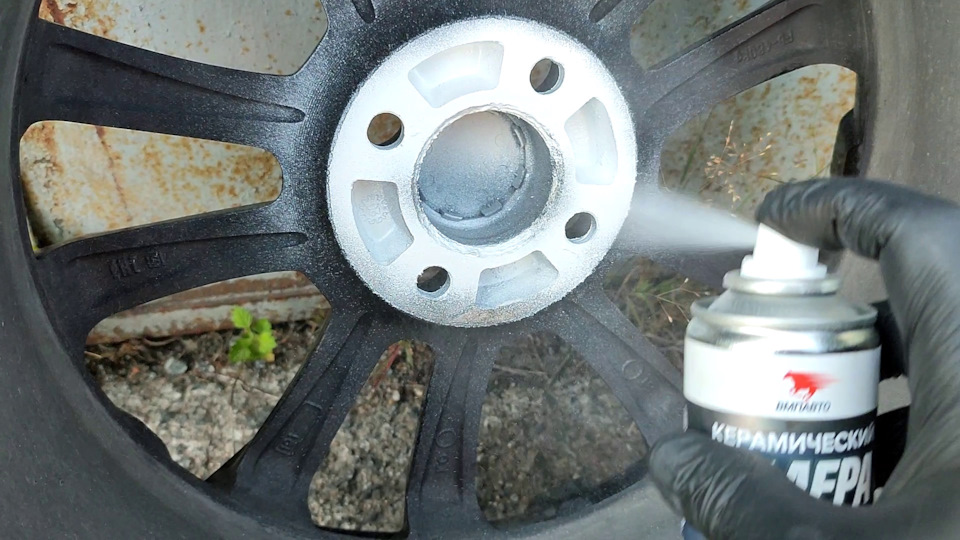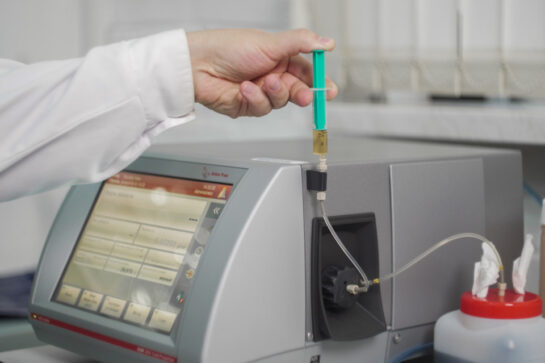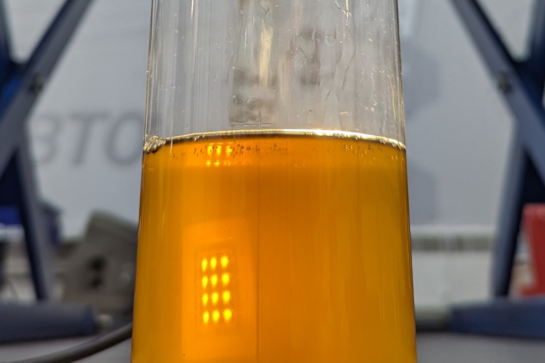Check your brakes
A careful driver will find time to check the brakes during the seasonal tire change. Our company manufactures a whole line of specialized products for brake system maintenance. Today we would like to remind you of them.
The first thing to do when checking the brakes is, of course, to clean all parts. A brake cleaner is suitable for this purpose. It effectively degreases and cleans brake discs, drums, cylinders, calipers, pads, clutch parts and ABS components from grease, brake fluid and other deposits.
Unlike other manufacturers’ brake cleaners, it evaporates quickly and leaves no residue or streaks. Powerful directional atomization allows removal of even very heavy deposits.
Next, we disassemble the braking unit. For example, let’s take the caliper.
First of all, the piston must be serviced. To do this, the piston must be pulled out to the maximum possible position, the dust cap must be gently pressed down and a small amount of PAG grease injected underneath, e.g. with a syringe. Ideally, of course, this should be done with the piston disassembled.
Polyalkylene glycol lithium complex PAG grease provides the smoothest possible sliding and reliable protection against piston and cylinder mirror wear under conditions of small oscillating movements and over a wide temperature range. Only a small amount is needed in the contact area. It should be noted that PAG grease is completely neutral to rubber products and is compatible with all types of brake fluids.
If you already have MC 1600 universal caliper grease in your arsenal, you can also grease the piston with it. The only serious limitation is that MC 1600 grease cannot be used on pistons if the brake system is filled with DOT5 brake fluid. This fluid, like MC 1600 grease, is silicone based, and the same, as you know, dissolves in the same. But MC 1600 grease is quite compatible with DOT5.1 fluid, because there is no silicone in this brake fluid. It’s the next stage of development of DOT4 fluid.
Okay, the piston is lubricated. Let’s move on to the installation of the pads. They also need to be lubricated. Lubricant is applied to the back of the pad and to the ends where the pads move in the caliper. It is clear why grease the ends. They are in contact with the caliper. But why grease the back side?
By lubricating the backside, we not only protect the non-functioning part of the pad from corrosion, but also reduce the likelihood of squealing. It is the intense micro-movements of the pad and its contact with the piston housing, bracket and caliper that often cause unpleasant squealing when braking.
After installing the pads, we continue assembling the caliper. Now we need to lubricate the guides. To lubricate the guides we recommend a silicone-based grease MC 1630 with PTFE (polytetrafluoroethylene). The finely dispersed PTFE particles in the contact areas form a thin separating film which, under certain conditions, can considerably reduce the coefficient of friction.
Due to its unique physical and chemical properties, PTFE is able to maintain its performance characteristics even when operating in aggressive environments over a wide temperature range. This grease is recommended for both conventional metal slides and slides with rubber bushings.
However, if this lubricant is not available, you can lubricate the guides with PAG grease or MC 1600 grease. They are equally suitable for this purpose.
The only thing to pay attention to when working with MC 1600 grease is that it must be applied on a surface well cleaned of old grease. Also, it is not necessary to apply too much grease. A part lubricated with “dye-free” MC 1600 grease works much better than a heavily lubricated part.
For the punctual maintenance of the brake system, we manufacture a kit that includes all the necessary lubricants: grease for the non-working surfaces of the pads and brackets, grease for the surfaces of the pistons, grease for the caliper guides. They are packaged in stick packs and their volume is sufficient to service the calipers of one axle of the vehicle.
The caliper has been checked and it is time to install the wheel. Take your time. First, treat the flanged surface of the disc with a ceramic release agent. This will prevent the disc from “sticking” to the hub in the future. This is especially true for alloy wheels. Unlike copper grease, ceramic grease does not cause electrochemical corrosion.
After you have checked the brake system, be sure to press the brake pedal all the way down a few times. This will bring the pads back to full readiness by selecting all the clearances.

